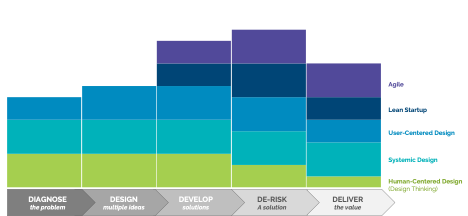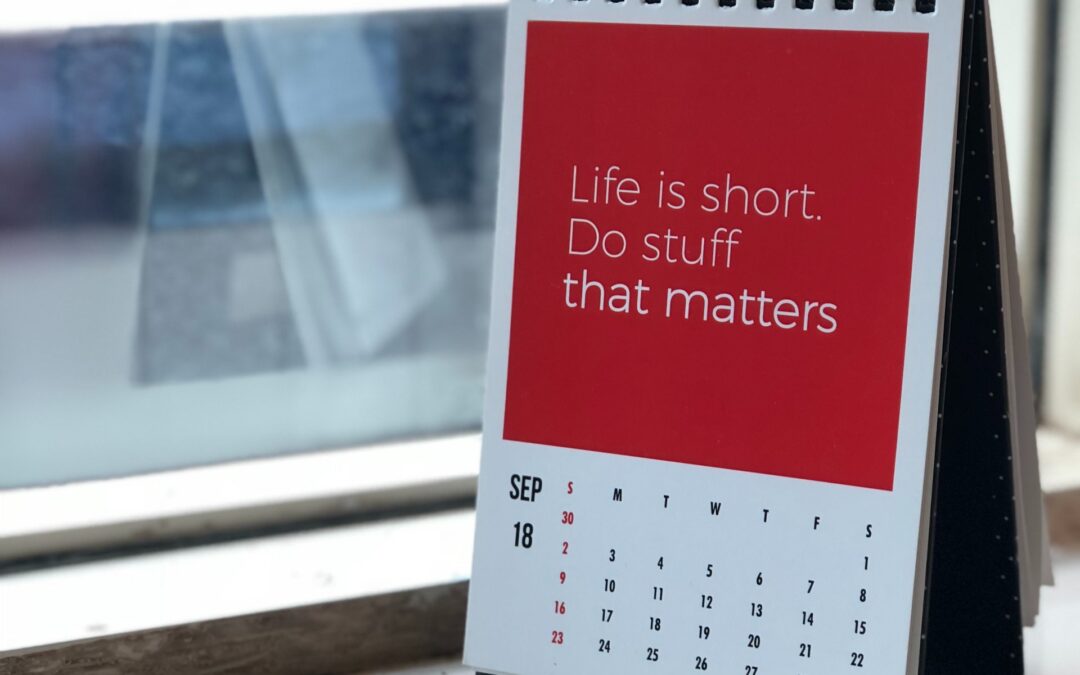In Part 1, you learned the What, Why, and How of 5 popular Innovation Frameworks – Human-Centered Design (also known as Design Thinking), Systemic Design, User-Centered Design, Lean Start-up, and Agile.
But as anyone who grew up in the 1980s and watched G.I. Joe will tell you, knowing is half the battle.
The other half is doing. More specifically, doing the right thing at the right time.
This brings us to Part 2 – the When of our 5 Innovation frameworks.
The Innovation Process
Before we get into the specifics of when to use each framework, let’s get clear on the activities that need to happen and the order in which they need to happen. In other words, we need to define an Innovation Process.
I know that sounds like an oxymoron. After all, you know that innovation is not a linear process. At best, it’s iterative. Usually, it looks and feels like this:

But you also know that this image doesn’t inspire confidence in senior leaders because it looks like chaos and doesn’t haven’t a timescale.
So to make the process more palatable to the powers that be, the Innovation Process is often shown as linear. Something like this:

Of course, that means that we, the innovators, must explain that the work isn’t, it’s an infinite loop with exit points at each step, and not every project can or should complete all the steps. It’s not perfect, but it serves its purpose (reassure senior leaders that we have a plan), so we’ll use it to help guide us to when to use each Innovation Framework.
Frameworks in the process
Now that we know the basic order in which activities should occur, we can return to our frameworks to determine which ones will best serve us in each step of the process.
“But wait!” some of you may exclaim. “Can’t we use them all?”
You can, but you don’t need to. Human-Centered Design and User-Centered Design are incredibly similar, and trying to use them both is more likely to confuse than clarify the work to be done.
“I knew it!” others will laugh, “that’s why I only use (fill in the framework).”
You can, but you shouldn’t. Every innovation has its strengths and weaknesses. The most successful innovators pull the best approaches and tools from each framework into their process.
Here’s how I think things fit together:

How to Interpret: The thicker the colored band in a column, the better suited the Innovation Framework is for the phase in the process. For example, Human-Centered Design is excellent for Diagnose, Design, and Develop phases, useful in De-Risk, and ok in Deliver. In contrast, Agile is not at all suited for Diagnose and Design but is excellent for De-Risk and Deliver.
In Diagnose and Design, lean heavily on Human-Centered Design because it keeps you open to all the types of people involved in the problem and the solution (not just users). If you’re operating in a complex environment, like healthcare or education, being in Systemic Thinking to make sure you don’t miss non-human elements like regulation, technology, or geopolitical dynamics that could also have a significant effect on the problem and eventual solution
In Develop, start weaving in elements of Lean Startup, especially its focus on building business models and not just individual products or services. Tools like the Business Model Canvas are a huge help here and reveal critical but non-product/service assumptions that need to be tested.
In De-Risk, Lean Startup and Agile become (relatively) interchangeable, so use the language that best resonates within your organization. The key here is to apply the Scientific Method to your solution through rapid prototyping and testing.
In Deliver, you’ve launched your solution, and the goal is to scale. Agile is designed for this, but it’s essential to keep the human/user at the center of continuous improvement efforts.
Popular “Innovation” Frameworks: Now What?
You’re now even more of an expert on five popular innovation frameworks, ready to talk the talk and walk the walk with the best of ’em. Right?
Maybe.
This is all the opinion of one person in a world of experts who think and who do. So what did I miss? What did I get wrong? Drop a comment, and you’ll make us all smarter!
Click here to automatically download the What, Why, How, and When Cheat Sheet
